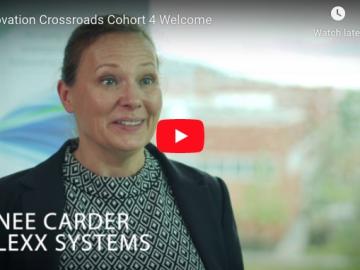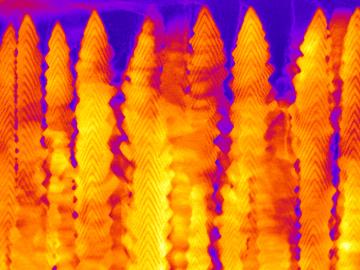
Filter News
Area of Research
News Type
News Topics
- (-) Advanced Reactors (10)
- (-) Bioenergy (9)
- (-) Composites (6)
- (-) Frontier (2)
- (-) Machine Learning (12)
- (-) Nanotechnology (13)
- (-) Physics (6)
- 3-D Printing/Advanced Manufacturing (22)
- Artificial Intelligence (17)
- Big Data (9)
- Biology (9)
- Biomedical (13)
- Biotechnology (4)
- Buildings (9)
- Chemical Sciences (17)
- Clean Water (4)
- Computer Science (31)
- Coronavirus (12)
- Critical Materials (5)
- Cybersecurity (1)
- Emergency (1)
- Energy Storage (22)
- Environment (29)
- Exascale Computing (2)
- Fossil Energy (1)
- Fusion (8)
- Grid (7)
- High-Performance Computing (12)
- Isotopes (9)
- ITER (1)
- Materials (9)
- Materials Science (32)
- Mathematics (2)
- Microelectronics (1)
- Microscopy (5)
- Molten Salt (3)
- National Security (4)
- Neutron Science (24)
- Nuclear Energy (16)
- Partnerships (5)
- Polymers (8)
- Quantum Computing (3)
- Quantum Science (8)
- Security (2)
- Simulation (6)
- Space Exploration (1)
- Statistics (1)
- Summit (12)
- Transportation (15)
Media Contacts

Scientists at ORNL used neutron scattering and supercomputing to better understand how an organic solvent and water work together to break down plant biomass, creating a pathway to significantly improve the production of renewable

Researchers at Oak Ridge National Laboratory developed a method that uses machine learning to predict seasonal fire risk in Africa, where half of the world’s wildfire-related carbon emissions originate.

An ORNL team used a simple process to implant atoms precisely into the top layers of ultra-thin crystals, yielding two-sided structures with different chemical compositions.

ORNL welcomed six technology innovators to join the fourth cohort of Innovation Crossroads, the Southeast’s only entrepreneurial research and development program based at a U.S. Department of Energy national laboratory.

A team led by the Department of Energy’s Oak Ridge National Laboratory synthesized a tiny structure with high surface area and discovered how its unique architecture drives ions across interfaces to transport energy or information.

ITER, the world’s largest international scientific collaboration, is beginning assembly of the fusion reactor tokamak that will include 12 different essential hardware systems provided by US ITER, which is managed by Oak Ridge National Laboratory.

Scientists have tapped the immense power of the Summit supercomputer at Oak Ridge National Laboratory to comb through millions of medical journal articles to identify potential vaccines, drugs and effective measures that could suppress or stop the

Researchers at the Department of Energy’s Oak Ridge National Laboratory are refining their design of a 3D-printed nuclear reactor core, scaling up the additive manufacturing process necessary to build it, and developing methods

In the 1960s, Oak Ridge National Laboratory's four-year Molten Salt Reactor Experiment tested the viability of liquid fuel reactors for commercial power generation. Results from that historic experiment recently became the basis for the first-ever molten salt reactor benchmark.

The prospect of simulating a fusion plasma is a step closer to reality thanks to a new computational tool developed by scientists in fusion physics, computer science and mathematics at ORNL.


